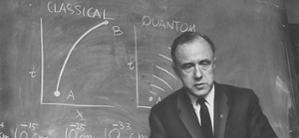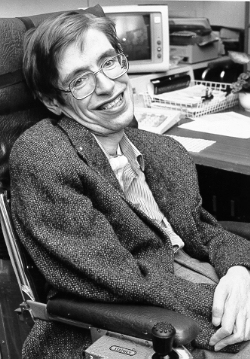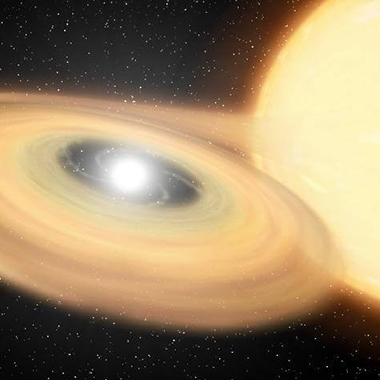A hair-raising discovery: Stephen Hawking's black hole paradox solved

An international quartet of physicists, including Michigan State University Professor Stephen Hsu, have co-authored two papers that significantly alter our understanding of black holes and resolve a problem that has confounded scientists for nearly half a century.
In the first paper, appearing in the journal Physical Review Letters, Hsu, professor of theoretical physics, along with Xavier Calmet, professor of theoretical physics, and Ph.D. student Folkert Kuipers from the University of Sussex, School of Mathematical and Physical Sciences; and Roberto Casadio, associate professor of theoretical physics and researcher with the Italian National Institute for Nuclear Physics, University of Bologna, have demonstrated that black holes are more complex than originally understood and have a gravitational field that, at the quantum level, encodes information about how they were formed.

In the 1960s, eminent physicist John Archibald Wheeler expressed the fact that black holes are lacking any observable features beyond their total mass, spin and charge with the phrase “black holes have no hair.” This is known as the no-hair theorem. Having demonstrated that black holes do in fact have this additional characteristic, Hsu and his collaborators have labelled their discovery as ‘quantum hair from gravity,’ in a nod to Wheeler’s phrase.
"Black holes have long been considered the perfect laboratory to study how to merge Einstein’s theory of general relativity with quantum mechanics,” Calmet explained. “It was generally assumed within the scientific community that resolving this paradox would require a huge paradigm shift in physics, forcing the potential reformulation of either quantum mechanics or general relativity.

“What we found – and I think is particularly exciting – is that this isn’t necessary,” Calmet continued. “Our solution doesn’t require any speculative idea, instead our research demonstrates that the two theories can be used to make consistent calculations for black holes and explain how information is stored without the need for radical new physics.”
Using mathematical methods developed over the past 10 years to perform calculations in quantum gravity, the scientists have shown explicitly that matter that collapses into a black hole leaves an imprint in the gravitational field of the black hole when quantum gravitational corrections are taken into account. This imprint is what the scientists refer to as 'quantum hair.'
Specifically, they compared gravitational fields of two stars with the same total mass and radii but different compositions. At the classical level, the two stars have the same gravitational potential, but at the quantum level, the potential depends on the star composition. When the stars collapse into black holes, their gravitational fields preserve the memory of what the stars were made of and lead to the conclusion that black holes do have hair, after all.
“The concept of a causal or event horizon is central to the notion of a black hole,” Hsu explained. “What is behind the horizon cannot, in classical physics, influence the exterior. We showed that there are intricate entanglements between the quantum state of the matter behind the horizon (inside the hole) and the state of gravitons outside. This entanglement makes it possible to encode quantum information about the black hole interior in Hawking radiation that escapes to infinity.”
“It turns out that black holes are in fact good children, holding onto the memory of the stars that gave birth to them,” Calmet said.

In a follow-up paper, published in a separate journal, Physics Letters B, Calmet and Hsu show that their 'quantum hair' resolves Hawking’s Black Hole Information Paradox, which arose from Professor Stephen Hawking’s suggestion in 1976 that, as they evaporate and emit thermal radiation, black holes destroy information about what had formed them. This appeared to violate a fundamental law of quantum mechanics which states that any process in physics can be mathematically reversed.
The scientists’ 'quantum hair', however, provides the mechanism by which information is preserved during the collapse of a black hole and as such resolves one of modern science’s most famous quandaries.
“As we know from Einstein, gravitational forces arise from the very geometry of spacetime itself,” Hsu said. “Hence, when we quantize gravity, we expect to discover new things about quantum spacetime. In this case, we learn that the Hawking radiation from a black hole is entangled with the quantum state of spacetime itself!”
The ground-breaking results are the product of a long-term collaboration between Calmet, Casadio and Hsu. They also build on previous discoveries from Calmet as to the nature of black holes and quantum gravity, including research published in 2021 that demonstrated, for the first time, that black holes exert a pressure.
Banner image: Black holes are some of the strangest and most fascinating objects in outer space. They're extremely dense, with such strong gravitational attraction that even light cannot escape their grasp if it comes near enough. The above image is an illustrative editorial vector representation of the first ever black hole picture taken from the Event Horizon Telescope in Sibiu, Romania on March 10, 2019. The black hole is in the center of galaxy m87. Credit: Shutterstock/2DAssets



